By Evan McDonagh, Library Assistant
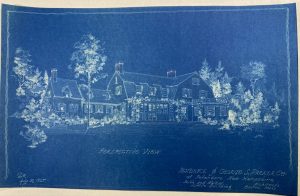
Delving into the stacks of the Massachusetts Historical Society collections, one might happen upon a series of sprawling and intricate blueprints for the “Residence of George S. Parker” in Peterborough, New Hampshire. A majestic home with gleaming white walls and several stalwart chimneys, the New Hampshire “Clue House” has impacted lives worldwide through the most unexpected of sources: the board game Clue.
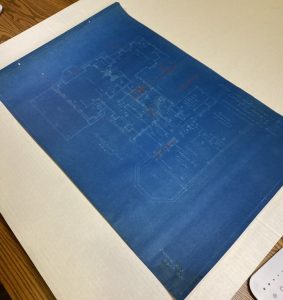
Clue, or Cluedo as it was called originally, came about during the Second World War and the air-raid blackouts of 1943-1945. Its inventor–British musician Anthony Pratt–greatly enjoyed murder mystery parties. Facing the isolation of nighttime raids, Pratt decided to transform this experience into a playable board game. By 1947, Pratt and his wife had finished designing the game and patented it to the U.K. board game manufacturer Waddington’s and its American counterpart, Parker Brothers.[1]
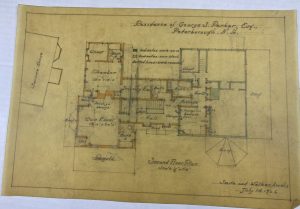
George Swinnerton Parker was born in 1867 in Salem, Mass. An avid lover of games, Parker invented his first game–a card-based game called Banking–as a teenager. This passion pushed Parker to establish his game publishing company in 1883. The addition of George’s brothers Charles and Edward in 1888 and 1898 would create the company formally known as Parker Brothers. From these roots, Parker Brothers grew to exert massive influence on the world of board games, with the company producing or publishing classics like Monopoly, Risk, and Sorry.[2]
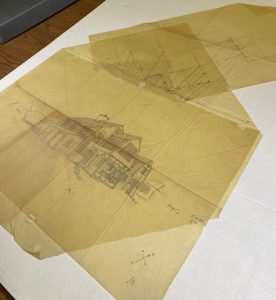
The George S. Parker house entered the picture over one hundred years before the Parker Brothers even existed. Situated among the picturesque Monadnock mountains, the Peterborough property was constructed in 1790, a cape house built with wood from a sea captain’s home in Salem, Mass. When George S. Parker purchased the house in 1925, he expanded upon the existing structure with wood from his own ancestral home in Salem.
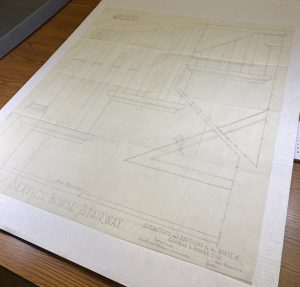
Parker and his wife lived in the house for three decades, during which Parker Brothers acquired the rights to produce Clue in 1947. The floor plan of the Parker estate, including the decorative furniture, the first floor rooms, and even the secret passages, all inspired the changes that George S. Parker made to the North American version of Clue. By the time of its release in 1949, the layouts of the Clue board and the Parker house were inextricably linked.[3]
Bibliography
- Popvici, Alice. “The Game Was Borne of Boredom During WWII Air-Raid Blackouts.” The History Channel. Last updated August 29, 2018. https://www.history.com/news/clue-game-origin-wwii.
- The History Channel. “The Parker Brothers.” Accessed October 12, 2007. https://web.archive.org/web/20071012132037/http://www.history.com/exhibits/toys/inventors.html.
- Donelan, Jenny. “A House with Secrets.” New Hampshire Home. Accessed April 4, 2023. https://www.nhhomemagazine.com/a-house-with-secrets/.
[1] Alice Popovici, “The Game Was Borne of Boredom During WWII Air-Raid Blackouts,” The History Channel, last updated August 29, 2018, https://www.history.com/news/clue-game-origin-wwii.
[2] “The Parker Brothers,” The History Channel, accessed October 12, 2007, https://web.archive.org/web/20071012132037/http:/www.history.com/exhibits/toys/inventors.html.
[3] Jenny Donelan, “A House with Secrets,” New Hampshire Home, accessed April 4, 2023, https://www.nhhomemagazine.com/a-house-with-secrets/.

